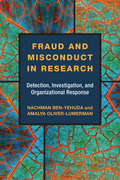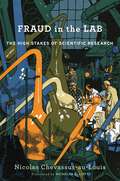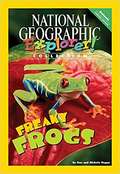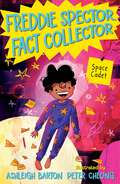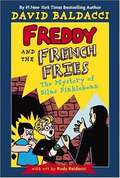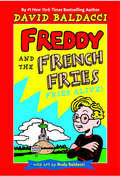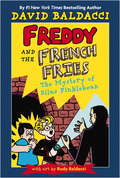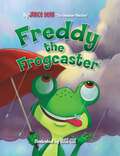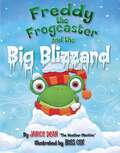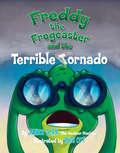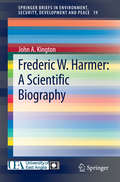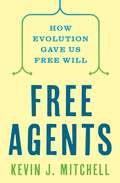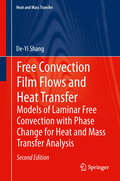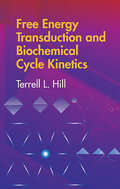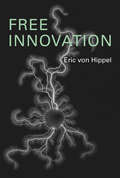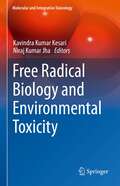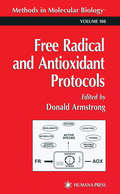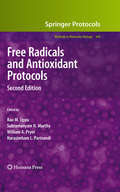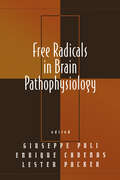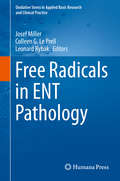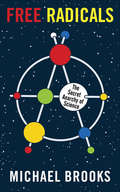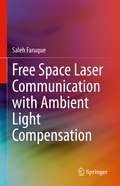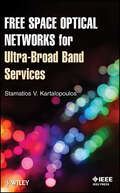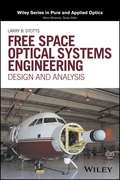- Table View
- List View
Fraud and Misconduct in Research: Detection, Investigation, and Organizational Response
by Nachman Ben-Yehuda Amalya Oliver-LumermanIn Fraud and Misconduct in Research, Nachman Ben-Yehuda and Amalya Oliver-Lumerman introduce the main characteristics of research misconduct, portray how the characteristics are distributed, and identify the elements of the organizational context and the practice of scientific research which enable or deter misconduct. Of the nearly 750 known cases between 1880 and 2010 which the authors examine, the overwhelming majority took place in funded research projects and involved falsification and fabrication, followed by misrepresentation and plagiarism. The incidents were often reported by the perpetrator’s colleagues or collaborators. If the accusations were confirmed, the organization usually punished the offender with temporary exclusion from academic activities and institutions launched organizational reforms, including new rules, the establishment of offices to deal with misconduct, and the creation of re-training and education programs for academic staff. Ben-Yehuda and Oliver-Lumerman suggest ways in which efforts to expose and prevent misconduct can further change the work of scientists, universities, and scientific research.
Fraud in the Lab: The High Stakes of Scientific Research
by Nicolas Chevassus-au-LouisFrom manipulated results and fake data to retouched illustrations and plagiarism, cases of scientific fraud have skyrocketed in the past two decades. In a damning exposé, Nicolas Chevassus-au-Louis details the circumstances enabling the decline in scientific standards and highlights efforts to curtail future misconduct.
Freaky Frogs, Pioneer Edition (National Geographic Explorer Collection)
by Dan Hogan Michele HoganNIMAC-sourced textbook
Fred Sanger Double Nobel Laureate
by George G. BrownleeConsidered 'the father of genomics', Fred Sanger (1918-2013) paved the way for the modern revolution in our understanding of biology. His pioneering methods for sequencing proteins, RNA and, eventually, DNA earned him two Nobel Prizes. He remains one of only four scientists (and the only British scientist) ever to have achieved that distinction. In this, the first full biography of Fred Sanger to be published, Brownlee traces Sanger's life from his birth in rural Gloucestershire to his retirement in 1983 from the Medical Research Council's Laboratory of Molecular Biology in Cambridge. Along the way, he highlights the remarkable extent of Sanger's scientific achievements and provides a real portrait of the modest man behind them. Including an extensive transcript of a rare interview of Sanger by the author, this biography also considers the wider legacy of Sanger's work, including his impact on the Human Genome Project and beyond.
Freddie Spector, Fact Collector: Space Cadet
by Ashleigh BartonDid you know that a bolt of lightning is five times hotter than the Sun? Or that slugs have four noses? How about that humans share 50 per cent of our DNA with bananas? Freddie Spector, the world's greatest fact collector, knows all these things and so much more.Freddie Spector loves collecting facts - about anything and everything. His latest obsession is space. It's all he talks about: stars, planets, galaxies, astronauts, space travel - and, of course UFOs and extraterrestrials. Freddie writes all his facts on sticky notes that his mum and big sister, Henrietta, keep finding in weird places - like in their sock drawers or their sandwiches.But whenever Freddie collects facts on a topic, his very active imagination always gets involved too. And, after noticing some very suspicious goings-on, Freddie realises it's up to him to discover the answer to a burning question: could aliens have landed in his neighbourhood?Fast-paced and funny, this series is all about an everyday eight-year-old boy whose love of facts and extraordinary imagination come together with unexpected and hilarious results.
Freddie and the French Fries #2: The Mystery of Silas Finklebean
by David BaldacciTHE FAB FRIES RETURN FOR ANOTHER WACKY CAPER--THROUGH TIME AND SPACE! The Gang: Freddy T. Funkhouser, science whiz kid; Howie Kapowie, his cheese-cube-chowing sidekick; and Freddy's most incredible inventions: five living, breathing French fries by day, superpowered kick-butt spuds by night! The Plan: Use the secret notes of mysterious missing inventor Silas Finklebean to construct a time travel machine (from a pile of junk) that sweeps the annual science competition and creams Pookesville's baddest bully, Adam Spanker, once and for all. The Big questions: Will Freddy's time-warp team beat the clock before Adam's exploding volcano buries the Funkhouser family restaurant, the Burger Castle, in goopy purple lava? And can they finally crack the case of the long-lost Silas Finklebean? Bestselling author David Baldacci cooks up another scrumptious adventure, this time stirring in a dash of spooky mystery and zany science fiction, and topping it with a big helping of laughs!
Freddy and the French Fries #1: Fries Alive! (Freddy and the French Fries #1)
by David Baldacci Arudy BaldacciA master crafter of thrills, bestselling novelist David Baldacci shows his tremendous talent for side-splitting storytelling in this hilarious adventure about fame, friends, and family. Here is the story where readers first met Theodore, Wally, Curly, Ziggy, Si, and Meese (French fries so lovable you won't want to eat them!). But shoestring, waffle, wedge, curly, and crinkle-cut potatoes were never more irresistible than in this zany adventure about five giant fries that come to life--well, six if you count heads. It all begins when Freddy Funkhauser, an offbeat nine-year-old with a knack for science, embarks on an ambitious plan to win new customers for the family business, The Burger Castle. But when his secret invention ends up working better than he'd ever dreamed, his plans go wildly awry as his kooky companions wreak havoc in every corner of Freddy's world!
Freddy and the French Fries #2: The Mystery of Silas Finklebean (Freddy and the French Fries #2)
by David BaldacciIn this sequel to "Fries Alive!," Freddy Funkhauser discovers the lab of long-lost scientist Silas Finklebean, along with instructions on how to build a time machine. With Finklebean's help, Freddie is determined to prove himself to bully Adam Spanker.
Freddy the Frogcaster
by Janice DeanFreddy the Frog loves learning about the weather, and he's known for having the best predictions in town. But what happens when the town picnic is almost ruined by a storm that catches the local frogcaster by surprise? Freddie has to step in to save the day! Well-known Fox News broadcast meteorologist Janice Dean pens this exciting and hilarious tale about an aspiring weathercaster who can't keep his eyes off the sky. Children and adults will love the charming frog world Freddy lives in, and the fun science lessons he shares, with an activities section in the back
Freddy the Frogcaster and the Big Blizzard
by Janice DeanFreddy the Frog loves learning about the weather, and he’s known for having the best predictions in town. But what happens when a blizzard rolls in?
Freddy the Frogcaster and the Terrible Tornado
by Janice DeanGet ready for a whirlwind of adventure with Freddy the Frogcaster when a famous storm chaser visits Lilypad! In her fourth book, well-known meteorologist Janice Dean tackles some scary weather. Freddy the Frogcaster is faced with one of the most ferocious and devastating kinds of weather: the tornado. Young readers will learn all about how big storms occur and produce some of nature's most destructive weather. Chock-full of storm science lessons in the back, children and adults alike will learn valuable life-saving information. As Freddy reminds us, please be prepared and know what to do and where to go when the next bad storm comes your way! <p><p> <i>Advisory: Bookshare has learned that this book offers only partial accessibility. We have kept it in the collection because it is useful for some of our members. To explore further access options with us, please contact us through the Book Quality link on the right sidebar. Benetech is actively working on projects to improve accessibility issues such as these. </i>
Frederic W. Harmer: A Scientific Biography
by John A. KingtonComprising the first definitive account of the geological and palaeometeorological studies made by the British geologist, Frederic W. Harmer (1835-1924) this book contributes a previously missing chapter to the history of science. The main objective of the author is to ensure that the scientific work of Harmer, which unfortunately has been widely neglected or forgotten, becomes more generally known and acknowledged. The balance of this deficiency will be redressed by bringing to light in this volume his contributions to the history of science to an audience of academic and lay readers of the current literature.
Free Agents: How Evolution Gave Us Free Will
by Kevin J. MitchellAn evolutionary case for the existence of free willScientists are learning more and more about how brain activity controls behavior and how neural circuits weigh alternatives and initiate actions. As we probe ever deeper into the mechanics of decision making, many conclude that agency—or free will—is an illusion. In Free Agents, leading neuroscientist Kevin Mitchell presents a wealth of evidence to the contrary, arguing that we are not mere machines responding to physical forces but agents acting with purpose.Traversing billions of years of evolution, Mitchell tells the remarkable story of how living beings capable of choice arose from lifeless matter. He explains how the emergence of nervous systems provided a means to learn about the world, granting sentient animals the capacity to model, predict, and simulate. Mitchell reveals how these faculties reached their peak in humans with our abilities to imagine and to be introspective, to reason in the moment, and to shape our possible futures through the exercise of our individual agency. Mitchell&’s argument has important implications—for how we understand decision making, for how our individual agency can be enhanced or infringed, for how we think about collective agency in the face of global crises, and for how we consider the limitations and future of artificial intelligence.An astonishing journey of discovery, Free Agents offers a new framework for understanding how, across a billion years of Earth history, life evolved the power to choose, and why it matters.
Free Convection Film Flows and Heat Transfer
by De-Yi ShangThis book presents recent developments in our systematic studies of hydrodynamics and heat and mass transfer in laminar free convection, accelerating film boiling and condensation of Newtonian fluids, as well as accelerating film flow of non-Newtonian power-law fluids (FFNF). These new developments provided in this book are (i) novel system of analysis models based on the developed New Similarity Analysis Method; (ii) a system of advanced methods for treatment of gas temperature- dependent physical properties, and liquid temperature- dependent physical properties; (iii) the organically combined models of the governing mathematical models with those on treatment model of variable physical properties; (iv) rigorous approach of overcoming a challenge on accurate solution of three-point boundary value problem related to two-phase film boiling and condensation; and (v) A pseudo-similarity method of dealing with thermal boundary layer of FFNF for greatly simplifies the heat-transfer analysis and numerical calculation. A system of practical application equations on heat and mass transfer are provided in each chapter, which are formulated based on the rigorous numerical solutions with consideration of variable physical properties. In addition, in the second edition, other new research developments are further included on resolving an even big challenge associated with investigations of laminar free film condensation of vapour-gas mixture. They involve the novel methods for treatment of concentration- and temperature- dependent physical properties of vapour-gas mixture, and for rigorous solution of interfacial vapour saturation temperature, which have lead to rigorous analysis and calculation results on two-phase film flow velocity, temperature, and concentration fields, as well as condensate heat and mass transfer.
Free Energy Transduction and Biochemical Cycle Kinetics (Dover Books on Chemistry)
by Terrell L. HillThis three-part treatment translates the technical language of research monographs on the theory of free energy transfer in biology, making the subject more accessible to those entering the field. Designed for upper-level classes in biochemistry or biophysics, it can also be used for independent study. 36 figures. 1989 edition.
Free Innovation (The\mit Press Ser.)
by Eric Von HippelA leading innovation scholar explains the growing phenomenon and impact of free innovation, in which innovations developed by consumers and given away “for free.”
Free Radical Biology and Environmental Toxicity (Molecular and Integrative Toxicology)
by Kavindra Kumar Kesari Niraj Kumar JhaThe main aim of this book is to collect a series of research articles and reviews from a diverse group of scientists to share their research work on the role of free radical research and environmental toxicity. This book presents various state-of-the-art chapters of recent progress in the field of cellular toxicology and clinical manifestations of various disorders. Topics include cell signaling, various risk factors, the pathophysiology of disease instigation and distribution, mechanistic insights into metal and nanoparticle toxicity, neural toxicity, nongenotoxic carcinogenicity, immune and idiosyncratic toxicity, prevention, biomarkers related to disease progression and therapeutic strategies. In particular, this book provides valuable insight for researchers, pathologists, and clinicians with an interest in toxicological research and cellular impairments with special emphasis on therapeutic advancement.
Free Radical and Antioxidant Protocols
by Donald ArmstrongThis volume presents an outstanding collection of state-of-the-art methodologies for quantifying free radical and antioxidant analytes in tissue and body fluids using experimental models and in vitro procedures. These user-friendly and easily reproducible techniques cover the essential tasks, including radical generating systems, direct measurement or trapping of reactive radical species and acute-phase proteins, and measurement of metabolic intermediates derived from the oxidation of lipids, proteins, and nucleic acids. There are also methods for the determination of vitamin, enzymatic, and water-soluble antioxidants, as well as of essential micronutrients and cofactors. The techniques take advantage of new instrumentation and technology-probes, photon counting, chemiluminescence, and caged compounds, with an emphasis on HPLC-and are adaptable to a wide range of applications. The laboratory-tested free-radical assays described here in detail will illuminate the study of both primary and secondary oxidative stress and contribute significantly to our understanding of the many disorders associated with this process.
Free Radicals and Antioxidant Protocols
by Subramanyam N. Murthy Rao M. Uppu Narasimham L. Parinandi William A. PryorThis cutting-edge and updated book offers methods for the rapid detection of RONs and redox stress. It includes in-depth analysis of natural and synthetic antioxidants, and also of DNA oxidation, oxidative lipidomics, and biomarkers.
Free Radicals in Brain Pathophysiology (Oxidative Stress and Disease)
by Giuseppe PoliThis volume provides an authoritative, comprehensive view of the most current issues in brain pathophysiology and offers a critical evaluation of antioxidant-based therapeutic approaches to neurodegeneration, providing an up-to-date account of the role of antioxidants in the prevention and moderation of clinical symptoms.Examines free radicals
Free Radicals in ENT Pathology
by Colleen G. Le Prell Josef Miller Leonard RybakThis comprehensive volume examines the current state of free radical biology and its impact on otology, laryngology, and head and neck function. The chapters collectively highlight the interrelationship of basic and translational studies in each area, define the challenges to translation, and identify the existing basic issues that demand investigation as well as the opportunities for novel intervention to prevent and treat ENT pathology and impairment. In each chapter, or in some cases pairs of chapters, the author(s) have included or married issues of basic research with translational challenges and research, thus defining the pathway by which new basic insights may lead to interventions to prevent or treat impairment. The final chapter of this book reflects a meeting of all the contributors, culminating in a discussion and "white paper" that identifies the challenges to the field and defines the studies and collaborations that may lead to improved understanding of free radical biology in ENT and, subsequently, new interventions to medically treat ENT pathology.
Free Radicals: The Secret Anarchy of Science
by Michael Brooks&“An exuberant tour through the world of scientists behaving badly&” (The New York Times). They may have a public image as cool, logical, levelheaded types. But in reality, scientists will do pretty much anything—take drugs, follow mystical visions, lie, and even cheat—to make a discovery. In Free Radicals, physicist and journalist Michael Brooks seamlessly weaves together true stories of the &“mad, bad and dangerous&” men and women who have revolutionized the scientific world, and offers a fast-paced and thrilling exploration of the real process behind discovery (The Times, London). Brooks also traces the cover-up back to its source: the scientific establishment&’s reaction to the public fear of science after World War II. He argues that it its high time for science to come clean about just how bold and daring scientists really are. &“Not all scientists are nerds. In Free Radicals, physicist Michael Brooks tries to dispel the notion that scientists are stuffy, pen-protector-polishing bookworms.&” —The Washington Post &“Insightful . . . A page-turning, unvarnished look at the all-too-human side of science.&” —Kirkus Reviews
Free Space Laser Communication with Ambient Light Compensation
by Saleh FaruqueThis book addresses 5G network capacity requirements with a new architecture for 5G Optical Backhaul Network. The author first describes the challenges for 5G backhaul network requirements and then the details of an Optical Backhaul Network for 5G. The author describes an architecture, in which small cells deploy as a cluster (i.e., 3-5 small cells in one cluster), where one small cell works as an aggregation point using an optical transceiver to backhaul the aggregated traffic to the nearest optical network unit, before it then goes to the core network. This book also illustrates the optical link budget analysis that can be used to determine the availability and the performances of the optical backhaul link in different deployment scenarios and different weather conditions. Provides a single-source reference to the basics of free space laser communication with ambient light compensation;Offers timely information, blending theory and practice;Written to be accessible to readers with varying backgrounds, including numerous illustrations;Provides hands-on experience through practical examples, which can be put to work to deploy and optimize cellular networks.
Free Space Optical Networks for Ultra-Broad Band Services, 1st Edition
by Stamatios V. KartalopoulosThis book provides a comprehensive description of an optical communications technology known as free space optical--a next-generation communications network that uses optical signals through the atmosphere instead of fiber, RF, or microwaves. This technology potentially offers more complex ultrabandwidth communication services simultaneously to multiple users and in a very short time, compared to fiber optic technology. This text presents established and new advancements drawn from the latest research and development in components, networking, operation, and practices. This book describes the FSO network concepts in simple language. It provides comprehensive coverage in an easy-to-understand, progressive style that starts from the physics of the atmosphere and how it affects optical communications; continues with the design of a network node; and concludes with fiberless network applications from point-to-point to mesh topology. Important areas discussed include: Propagation of light in the atmosphere and phenomena that affect light propagation FSO transceiver design Point-to-point FSO systems Ring FSO systems Mesh-FSO systems and integrating the Mesh-FSO with the public network WDM Mesh-FSO FSO network security FSO-specific applications To meet the needs of both academia and industry, key mathematical formulas are presented along with descriptions, while extensive mathematical analyses are minimized or avoided. Free Space Optical Networks for Ultra-Broad Band Services serves as an ideal text for network communication professionals who enter the free space optical communication field, graduate students majoring in optical communications, optical communication engineers, researchers, managers, and consultants.
Free Space Optical Systems Engineering: Design and Analysis
by Larry B. StottsGets you quickly up to speed with the theoretical and practical aspects of free space optical systems engineering design and analysis One of today's fastest growing system design and analysis disciplines is free space optical systems engineering for communications and remote sensing applications. It is concerned with creating a light signal with certain characteristics, how this signal is affected and changed by the medium it traverses, how these effects can be mitigated both pre- and post-detection, and if after detection, it can be differentiated from noise under a certain standard, e.g., receiver operating characteristic. Free space optical systems engineering is a complex process to design against and analyze. While there are several good introductory texts devoted to key aspects of optics—such as lens design, lasers, detectors, fiber and free space, optical communications, and remote sensing—until now, there were none offering comprehensive coverage of the basics needed for optical systems engineering. If you're an upper-division undergraduate, or first-year graduate student, looking to acquire a practical understanding of electro-optical engineering basics, this book is intended for you. Topics and tools are covered that will prepare you for graduate research and engineering in either an academic or commercial environment. If you are an engineer or scientist considering making the move into the opportunity rich field of optics, this all-in-one guide brings you up to speed with everything you need to know to hit the ground running, leveraging your experience and expertise acquired previously in alternate fields. Following an overview of the mathematical fundamentals, this book provides a concise, yet thorough coverage of, among other crucial topics: Maxwell Equations, Geometrical Optics, Fourier Optics, Partial Coherence theory Linear algebra, Basic probability theory, Statistics, Detection and Estimation theory, Replacement Model detection theory, LADAR/LIDAR detection theory, optical communications theory Critical aspects of atmospheric propagation in real environments, including commonly used models for characterizing beam, and spherical and plane wave propagation through free space, turbulent and particulate channels Lasers, blackbodies/graybodies sources and photodetectors (e.g., PIN, ADP, PMT) and their inherent internal noise sources The book provides clear, detailed discussions of the basics for free space optical systems design and analysis, along with a wealth of worked examples and practice problems—found throughout the book and on a companion website. Their intent is to help you test and hone your skill set and assess your comprehension of this important area. Free Space Optical Systems Engineering is an indispensable introduction for students and professionals alike.
